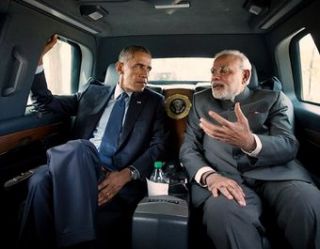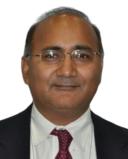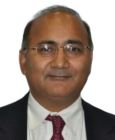Leadership
Obama's Passage to India
Lessons in global leadership from President Obama and PM Modi (U.S.-India)
Posted November 24, 2014
President Obama announced yesterday that he will be visiting India for the second time early next year, and as the first U.S. President to attend India’s Republic Day, he will be making a historic passage to India that even he could not have imagined.
This is a rite de passage for both nations, made possible by the election of Prime Minister Modi, the vibrancy of the Indian people, and the long line of American diplomats who have kept alive the idea of India, including the recent push by the administration—VP Biden, Sec. Kerry, Sec. Clinton, and Sec. Hagel—all travelling to India on recent diplomatic missions.
Dr. B.R. Ambedkar, the architect of India’s constitution, who shares the same alma mater with President Obama, Columbia University, must be smiling now from above.
On the 65th anniversary of India’s constitution, January 26th, 2015, the largest populist democracy in the world, a visit from an American president, where “the Bill of Rights” was ratified 225 years ago, may be a fitting tribute to a triumphant experiment.
While they come from wildly different perspectives—Modi leads the Indian conservative party BJP and Obama is the head the liberal DNC—the two leaders have a few rare things in common.

President Barack Obama and Prime Minister Narendra Modi of India travel by motorcade in Washington, D.C. on Sept. 30, 2014.
Both spent their formative years in a developing country, in the backwaters of small towns and villages, in the heyday of post-colonialism. Obama spent his early childhood in a kampong in Jakarta, Indonesia, in the late 1960s, while Modi in the state of Vadnagar, Gujarat, when he was tea-vendor (chai-wallah).
Both have known poverty first-hand and have an uncanny capacity to tune into the masses. For complex historical and personal reasons, both Obama and Modi admire Gandhi, the father of Indian democracy. Both are inheritors of the century-old legacy of the civil disobedience and civil rights movement that stretches back to South Africa.
Both leaders were elected as change candidates in a wave of populist support with exceedingly high expectations. "Yes, we can!" Both used this popular slogan to excite the masses. But the reality of governing is much, much harder. You have to build coalitions, meet the other side more than half-way. Sometimes, it may require more than just the twisting or bending of arms. Politics is a tough sport, not for the faint-hearted.
As a successful politician, you must know how to deal with “the art of the compromise.” Most of the governing process is about knowing “how to bake half-a-loaf” and to be “an eternal optimist.”
Here, President Obama may be able to transfer some lessons to Prime Minister Modi, whose job of reforming India will only become challenging:
-
Time waits for no one, especially, with gyrating polls and seesaw approval ratings.
-
Successful leaders grab history by the horns and try to bend it.
-
Change may not always work out to your liking, but when you're busy wrestling with history – to bend the human condition towards justice – you might inspire a movement of people.
This is the essence of great leadership. What more can you expect from an inspiring leader?
The-Global-Obama-Crossroads-Leadership

Dr. Dinesh Sharma in the East Room at the WH


